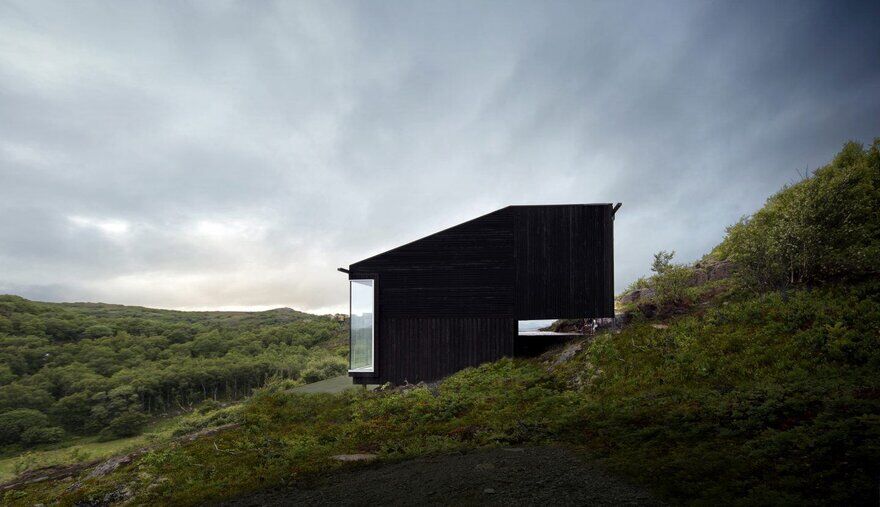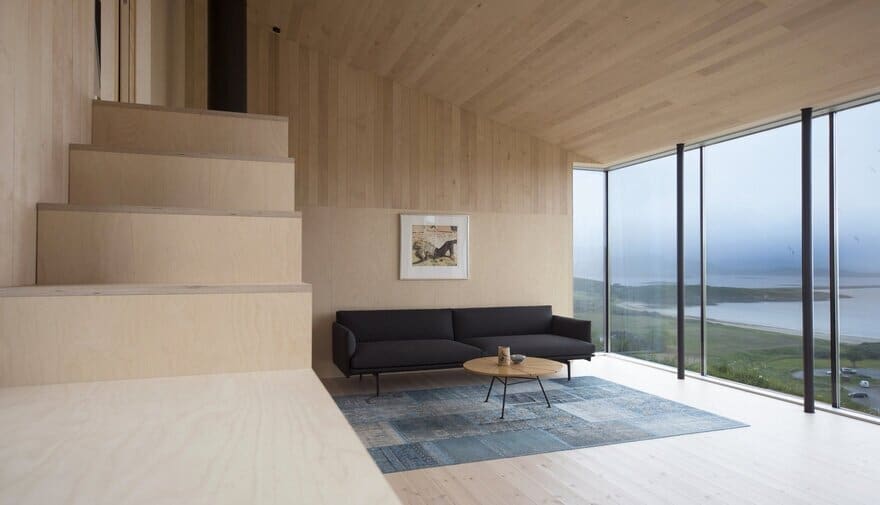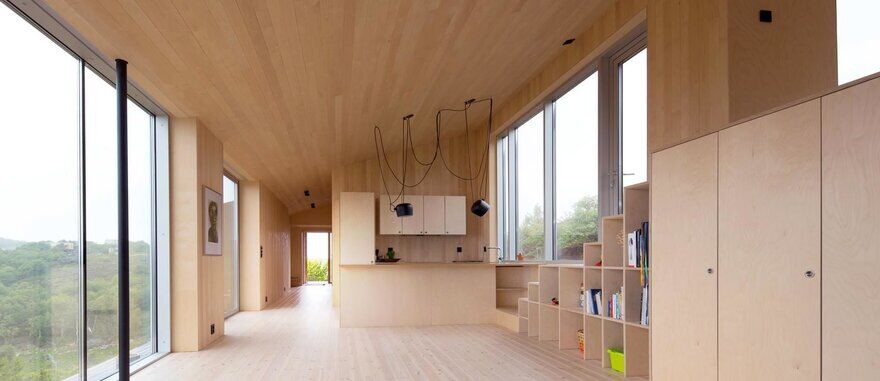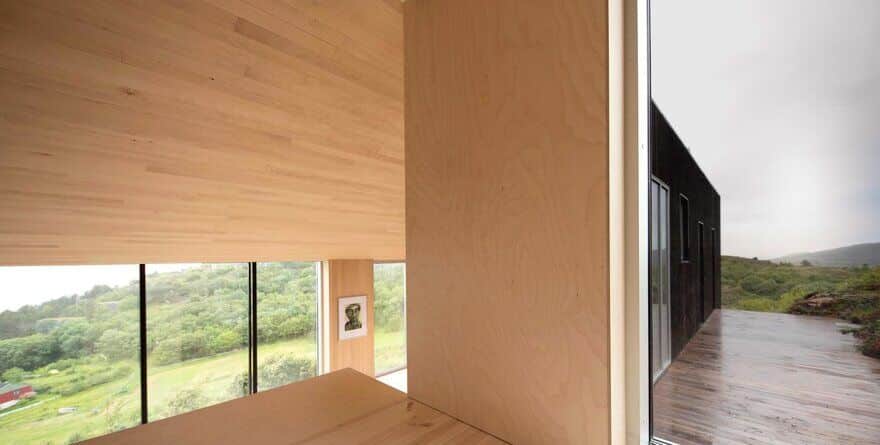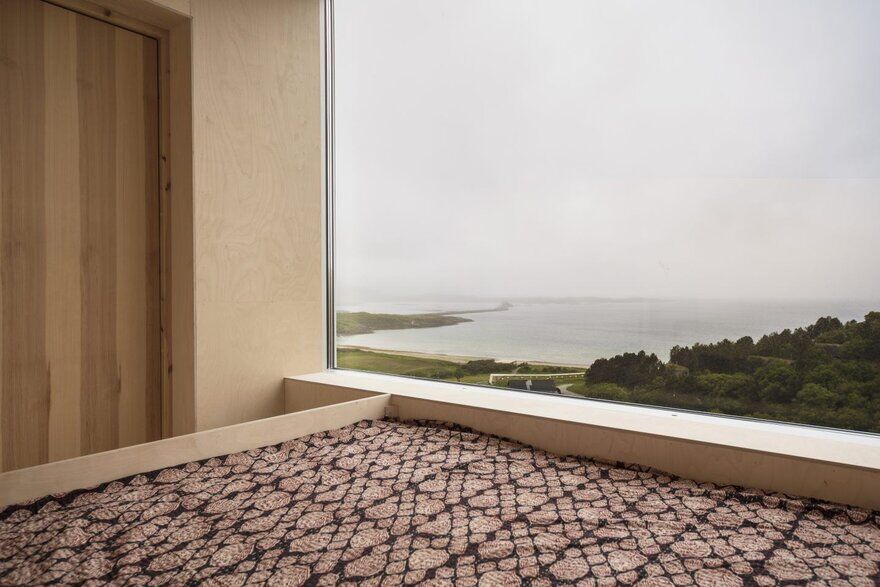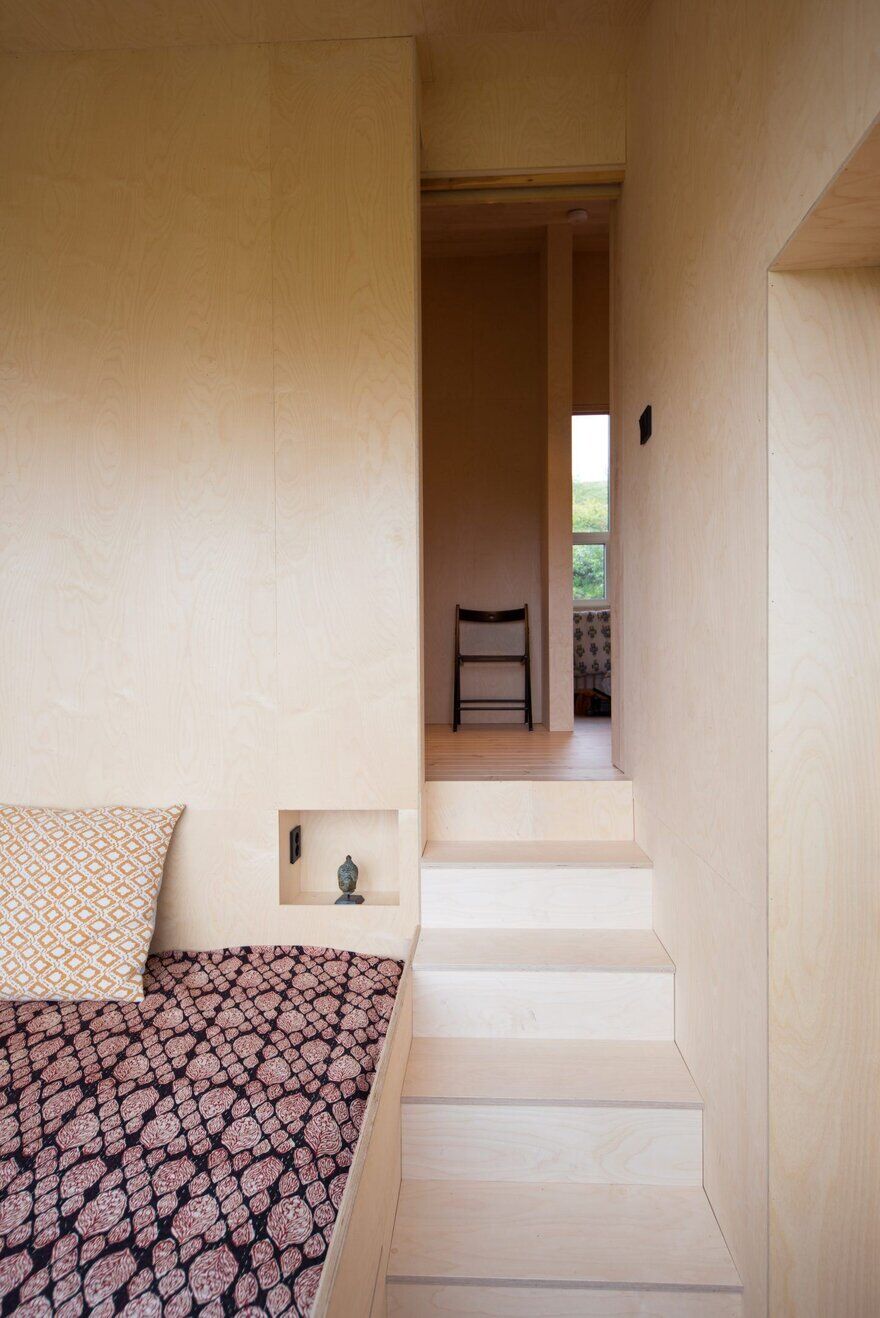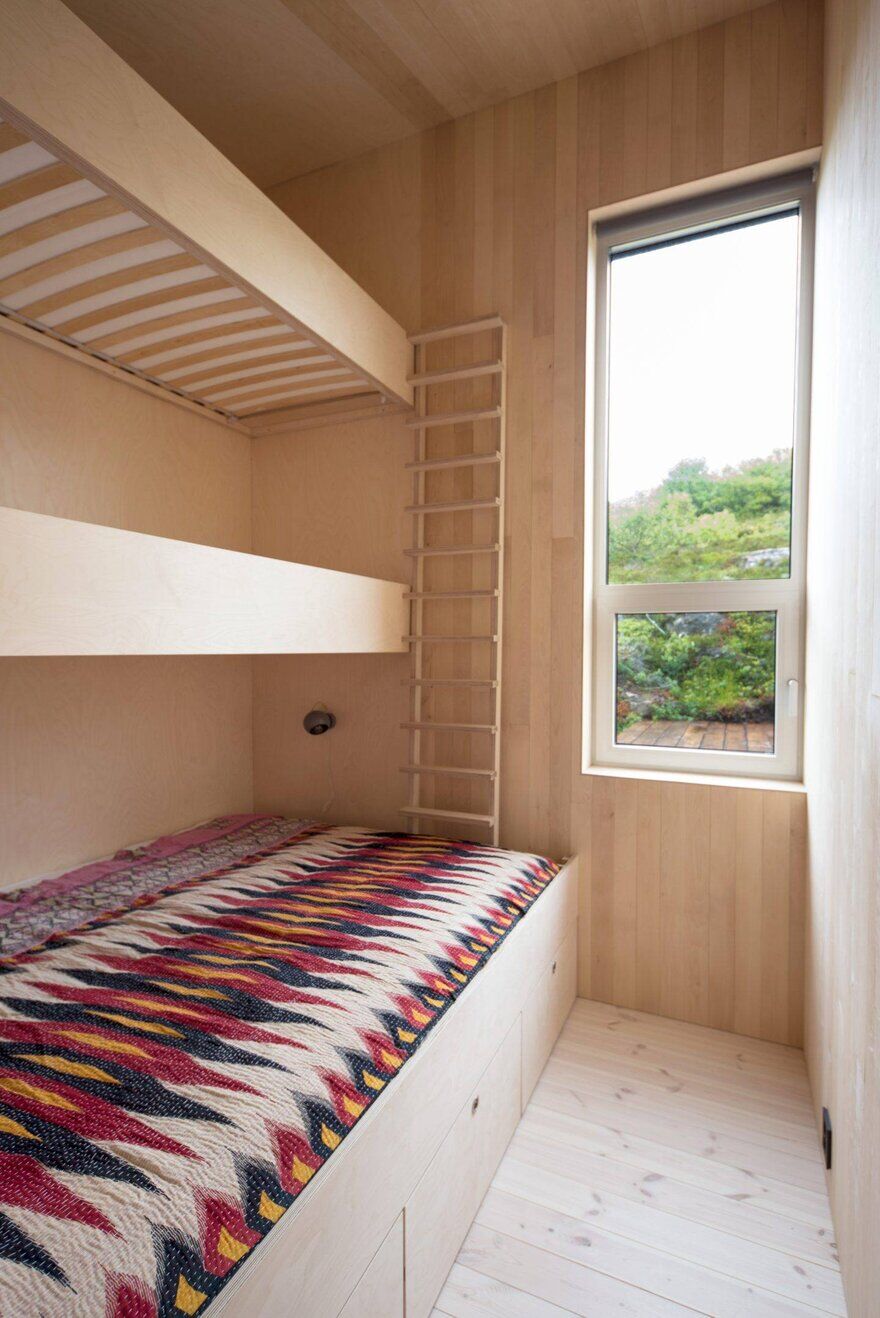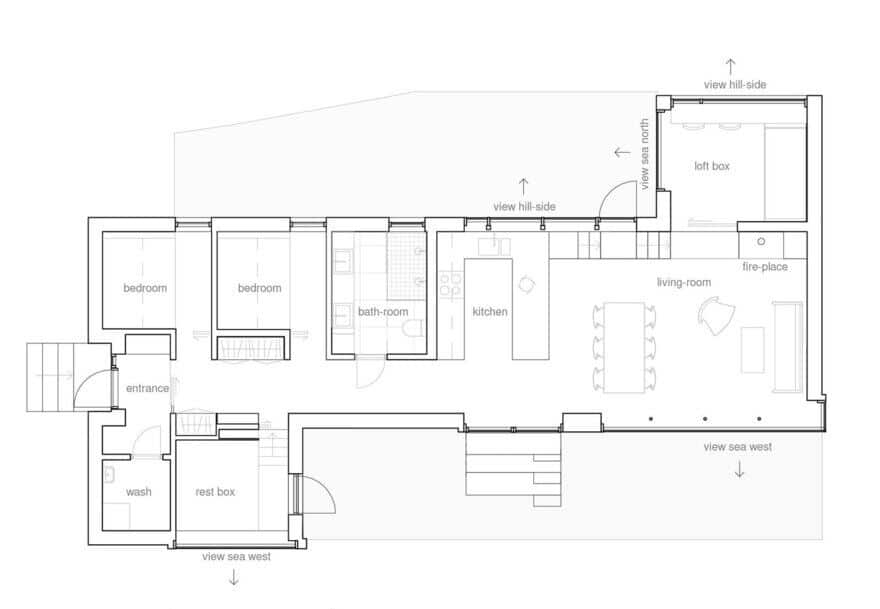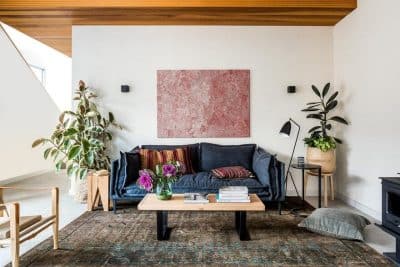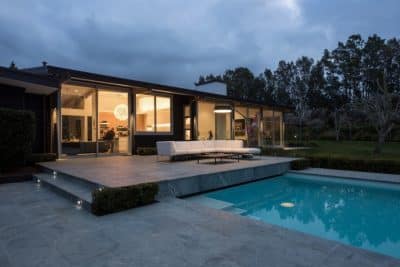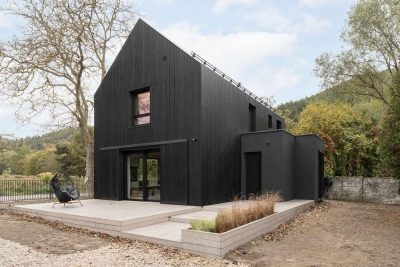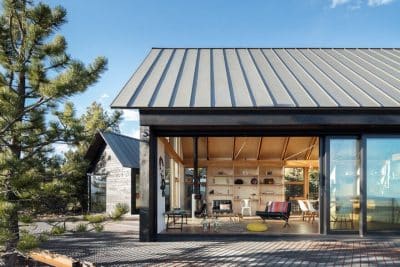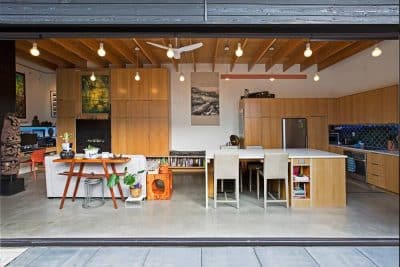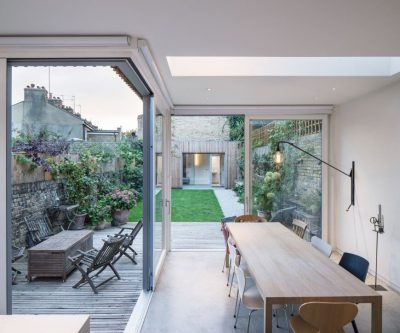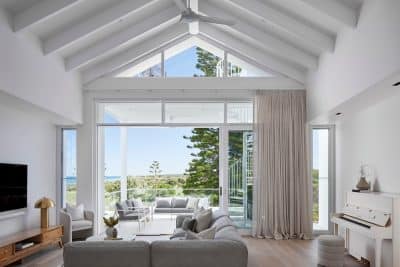Project: Wooden Hillside Cabin
Architects: Kappland Arkitekter
Design team: Kari Risvold Vikan, Fredrikke Finne Seip
Location: Island of Stokkøya, Norway
Area: 84.0 m2
Year: 2018
Photography is by Kappland Arkitekter
This is an all-year cabin for a family of five at Stokkøya, an island situated on the outermost coast of Trøndelag, Norway. Situated on a hillside, the site offers dramatic views in two directions; towards Linesøya, the open sea and horizon to the west and towards the dramatic landscape to the north.
The site is situated on a steep but even slope, with low vegetation and limited natural shelter from the wind. Important considerations during the development of the project were; to maintain visual contact with the two main views, to enhance the experience of being on the sloping terrain and at the same time create outdoor spaces protected from the wind and harsh weather conditions that can occur.
This Wooden Hillside Cabin follows the terrain and forms a stepped unit on the hillside, creating several levels, both indoors and outdoors. The main unit is a narrow shredded roof-unit, parallel to the contours of the terrain. The inclination of the roof follows the inclination of the slope. At each end of the extended main unit, smaller units step up towards the south and down towards the north. This way, one can experience climbing and descending the slope, both indoors and outdoors. The shape of the building defines two outdoor spaces that can be used during different sun and wind conditions.
At the back, an outdoor space is formed by the slope and the building. Here, one can enjoy the morning sun and at the same time be protected from the westerly winds. Generous window-openings offer sea-views throughout the building. At the front, another outdoor space is formed by the building unit. Here, one can enjoy the afternoon sun and be protected from the northerly winds. A walking trail passing the site to the north is used as an access-way. From the trail, a staircase leads into the entrance on the gable wall on the northern facade. The main functions in the cabin are organized along with the main unit, with the walkway to the west. As such contact with the views and the sea are enhanced while moving through the cabin.
In the kitchen and living-room-space, the west wall has a generous floor-to-ceiling opening, which provides immediate contact with the great and open landscape outside. In contrast, the windows over the kitchen worktop and in the bedrooms (in the east), offer contact with the nearby landscape and vegetation. In the bathroom, a high-placed window lets daylight in over the shower. There are no windows in the south wall, thus shielding the cabin from the only, but close-by neighbor. Despite the relatively limited floor area, the Wooden Hillside Cabin is designed for flexible use with several places to be. The kitchen and the living room function as a common space for the whole family.
There are also several different and smaller spaces, so family members and guests can choose to be by themselves. From the living room, one can step up into a smaller loft box with a view towards the landscape in the north. At the opposite end of the cabin, you can go down to a resting box and enjoy the views in peace and quiet. These two rooms can also be used as extra bedrooms, workrooms or playrooms according to the family’s needs. In order to effectively utilize space in the relatively small bedrooms and other areas, most of the furniture is designed specifically for the cabin and built onsite. In the bedrooms, you can sleep in beds on three levels, and in the rest box almost the entire room is filled with a daybed, all with integrated storage.
The staircase from the living room to the loft box is integrated with the wood stove and contains integrated shelves, cabinets, and storage for firewood. Perched on piles at the front and anchored on a concrete slab at the back, the building gently hovers on the slope, leaving hardly any footprint. To make the cabin blend with the vegetation on the hillside, the exterior cladding and ceilings are of dark royal impregnated wood. The wood panels vary in thickness and direction in areas of the facades and correspond with active or quiet zones indoors. Inside there is a variation of panels and veneer plates of birch, both on the walls and ceiling. The custom-made furniture is also made of birch veneer. The simplistic interior does not compete for attention with the magnificent views outside.


